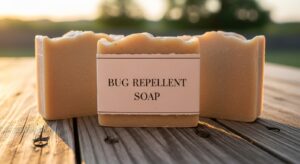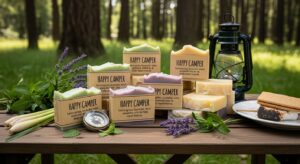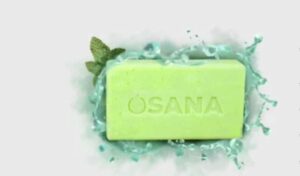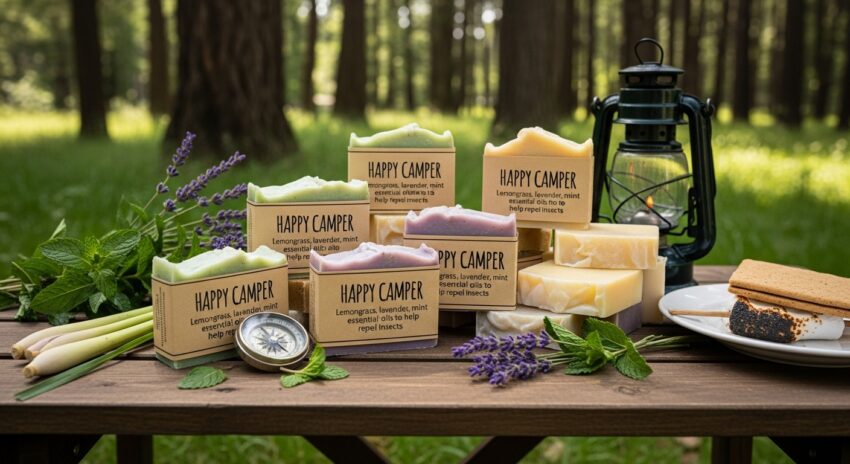🪰 Bug-Repellent Soap Recipe — “Entomophobia” Natural Bar That Keeps Bugs Away
A Soap So Good It Keeps Mosquitoes Away All Night
There have been a few fun names for this bug-repellent soap recipe over the years, and mine was “Entomophobia” — fear of insects! Customers loved the name and the results.
One customer told me she placed the bar on her nightstand and didn’t get bitten all night. She came back the next day to buy three more for her family! That’s how well these natural ingredients work.
If you’re selling soap at markets or online, creative names like Bug Off, Buzz Off, Citronella Bar, or Bug Me Not can make your products stand out.

🧼 Bug-Repellent Soap Recipe
Basic #1 Recipe:
-
51.2 oz Olive oil (or an Olive/Canola blend)
-
6.2 oz Coconut oil
-
6.2 oz Palm oil
-
23.4 oz Water
-
8.6 oz Lye crystals
Essential Oils for Scent & Repellency:
-
1 tsp Eucalyptus essential oil
-
3½ tsp Citronella essential oil
-
1½ tsp Lemongrass essential oil
-
1 tsp Tea Tree essential oil
-
1 tsp Cedarwood or Cedarwood Texas essential oil
-
1 tsp Peppermint essential oil
Other Additions:
-
1 oz Castor oil (added at trace)
-
2 tbsp Neem oil (added at trace — melt in a cup of base first)
Natural Colorant (optional):
-
¼ tsp yellow iron oxide powder
Mix with one cup of base first, then stir it back into the pot for an even color.
🟡 Note: Neem oil has a strong, unpleasant scent, and Cedarwood Texas smells like burned wood—but both work wonders for keeping bugs away!
🧴 Here are some creative examples for your bug-repellent soap recipe:
The first image shows a simple packaging soap made with no color added – ingredients should be listed on the back

Here is another idea simple beautiful bars

Another great-looking bar with a creative name.

Osana bar example: visually nice, but note—check ingredient transparency before buying.

This Osana bug repellent bar, or mosquito repellent bar, states all natural. Yet the first thing that suggests to me that it isn’t, is the color. You may be able to conjure up a color like that with natural colorants but I don’t know…Also, I looked a the site and cannot find an ingredient list. I know we don’t want to give our top-secret recipes or ingredients away, but people need to know.
🌿 Bug-Repellent Spritzer, Spray, or Lotion Ideas
You can use the same essential oil blend from this recipe to make other natural repellents.
🪶 DIY Bug-Repellent Spritzer
Add the essential oils above into 8 oz of distilled water and shake before use.
Spray on skin, clothing, and hair every couple of hours.
If you’re making one for dogs, include Cedarwood Texas essential oil—it’s powerful but safe for external use (avoid direct skin contact in high concentrations).
🧴 Natural Bug-Repellent Lotion
Blend the same essential oils into your favorite unscented lotion or homemade base.
Store-brand lotions often contain petroleum oils, so homemade versions with natural oils like coconut or olive oil are much better for your skin.
🦟 After-Bite Tip
If you still get bitten, make a small batch of Tea Tree Soap to soothe irritated skin and help prevent infection naturally.
🌱 Learn More About Natural Bug Control
Explore these related posts for complete natural bug protection:
Also, check the Johnson & Johnson “Off!” ingredients list to compare what’s really in commercial repellents—you’ll see why natural is better!
© 2025, Tes. All rights reserved.
